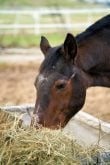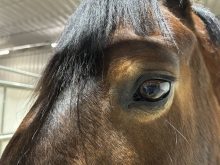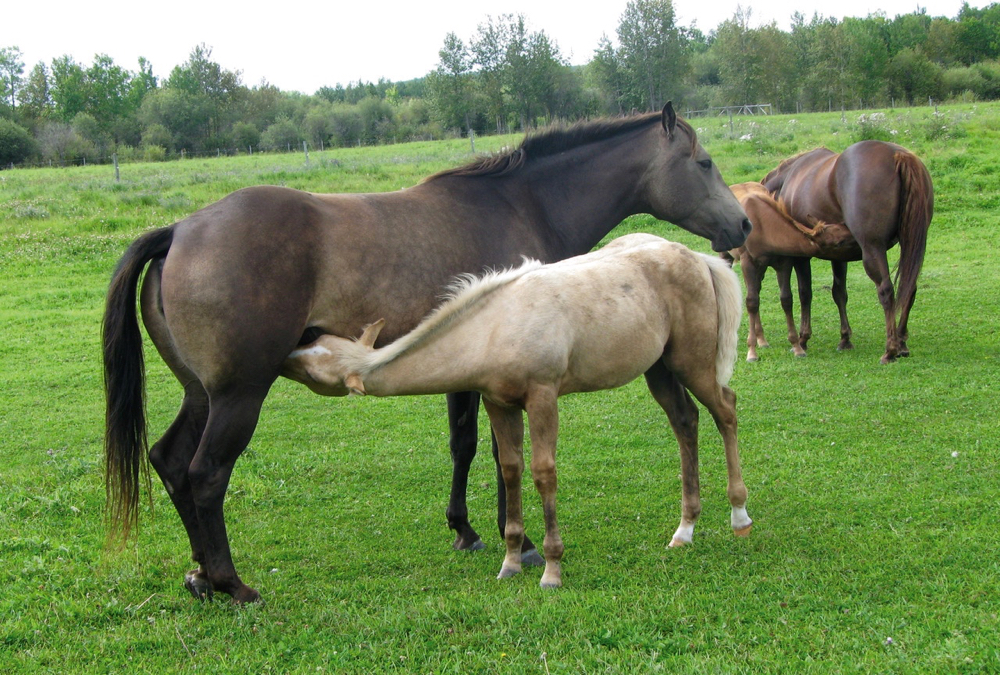Diarrhea in the horse describes a symptom with a wide variety of causes and presentations where for various reasons the intestinal tract does not complete absorption of electrolytes and water.
As the water content of the feces increases the normal grouping of well-formed fecal balls lose their individual ‘ball’ shape and the fecal matter becomes loose and runny — like a cow patty. As the feces becomes increasingly watery, so does the concern for the severity of the diarrhea.
It has been estimated that an adult horse with diarrhea can lose as much as 10 gallons or 40 litres of water and salts per day. The resulting dehydration becomes problematic for the horse leading to serious electrolyte imbalances, weight loss, kidney failure, and laminitis (or founder). Therefore it is important to take a sensible approach to diarrhea and recognize when veterinary intervention is indicated.
Read Also

Horns aren’t unlocking anytime soon on livestock transport standards
Standards good enough meet the definition of “humane” animal transportation still vary widely between what what industry wants, what animal rights advocates want and, between the two, what federal regulators decide is good enough.
Mild diarrheas that result from a short-lived stress or a sudden shift in diet are relatively harmless and self-resolving within a day or two. Foal heat diarrhea is also an example of a self-limiting short-term diarrhea. It usually occurs when the foal is about seven to 10 days old and coincides with the mare’s first estrous cycle after giving birth. Foals with normal foal heat diarrhea generally have loose or watery stools yet they continue to nurse regularly and remain active in their surroundings.
If, however, the foal stops nursing and becomes dull and lethargic it usually indicates a much more serious condition and the foal may need veterinary attention. This basic rule applying to diarrhea in the horse at any age is: If the horse appears sick in any way (that is, stops eating and/or drinking; appears dull and lethargic; loses weight suddenly; or begins to show blood in the diarrhea) then it requires veterinary attention.
Veterinarians will take note of the horse’s history, diet and environment and perform a thorough physical examination on the horse. They assess the horse’s level of dehydration and address problems that result secondary to the diarrhea. Their clinical findings may indicate further diagnostic blood work and fecal testing for parasites or other pathogens.
Parasitic infestation is a common reason for diarrhea in horse stock. Youngsters are more likely to succumb to roundworm infestation while mature horses are more susceptible to the infestation of small strongyles. There are also various bacterial and viral pathogens responsible for diarrhea in the horse. Whenever an infectious agent is suspected it is advisable to exercise reasonable biosecurity measures.
Non-infectious causes of diarrhea include plant toxicities, sand ingestion, and neoplasias in the gut. Diarrhea can also follow the use of medications such as antibiotics and non-steroidal anti-inflammatory drugs like phenylbutazone. These factors, like any of the other causes stated, change the health of the microbiome in the gut and/or damage the lining of the bowel and thus lead to diarrhea and other complications.
Treatment solutions for diarrhea in the horse vary greatly with its severity. It is extremely important to ensure the horse is drinking plenty of fresh water to compensate for any fluid losses. Horses with diarrhea will noticeably increase their voluntary intake of water to offset their fluid losses. It is advisable to check the horse with diarrhea for signs of dehydration two or three times a day, more so for a foal.
A simple way to check for dehydration in the horse is to gently pinch the skin of the neck or the upper eyelid. In a well-hydrated horse, the skin will quickly flatten out, while in a dehydrated horse the puckered skin will remain tented and then flatten out gradually. Severely dehydrated horses may need intravenous fluids and hospital care to restore their hydration. Clay powders and activated charcoal may be prescribed to nurse the intestinal tract.
Basic housekeeping practices for a horse with diarrhea include hygiene of the horse’s hindquarters, braiding of the tail to keep the long hairs out of any fluid diarrhea and application of petroleum jelly to the area of fecal staining. It is advisable to provide the horse with a free-choice diet of simple grass hay to soothe the disrupted intestinal tract. It is one of the first basic steps in re-establishing good gut flora.
It can be particularly challenging to identify the cause of chronic diarrhea and in some cases a cause simply cannot be found even when using all of the tests currently available.
A term called dysbiosis is used to describe a particular type of ‘undiagnosed’ chronic diarrhea. In dysbiosis an unbalanced microbial population exists in the horse’s hindgut due to unfavourable intestinal conditions caused by diet changes, environment, or medication administration. Many of these horses exhibit no other significant signs other than chronic diarrhea and otherwise appear normal. Treatment is aimed at restoring the healthy gut flora.
Prebiotics and probiotics are given in an attempt to ‘reseed’ some good bacteria into the gut. Although this idea is good in theory it often fails to effectively duplicate the rich diversity of the equine microbiome and thus efficacy of this treatment is highly variable.
The relative success of this remedy serves as an important reminder that the health of the whole horse is intimately connected to the health of the complex and diverse microbiome housed within its gut and so this microbiome and/or population of micro-organisms is an equal and central ‘patient’ in every horse with diarrhea.
















